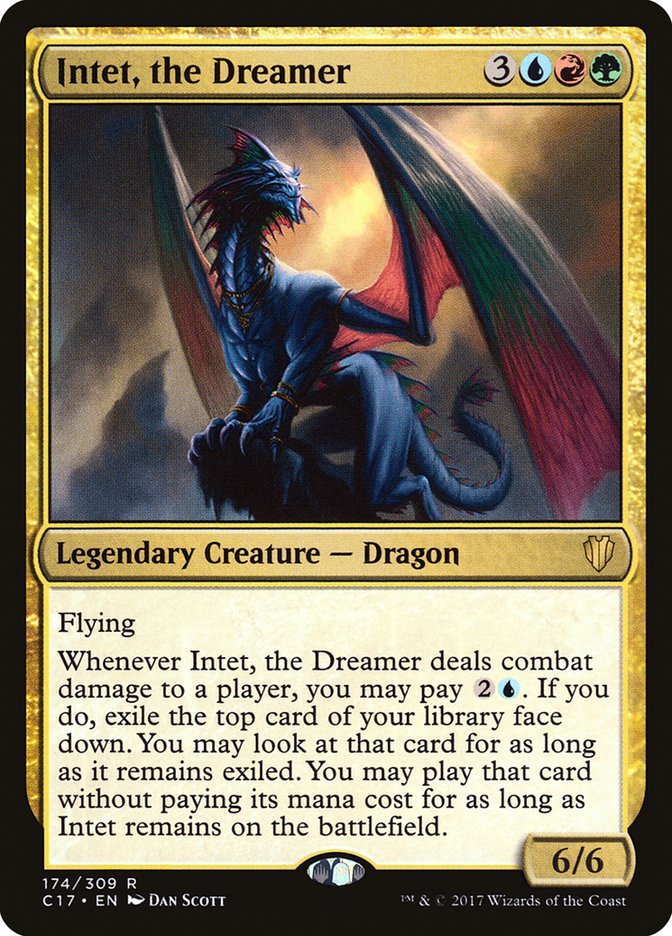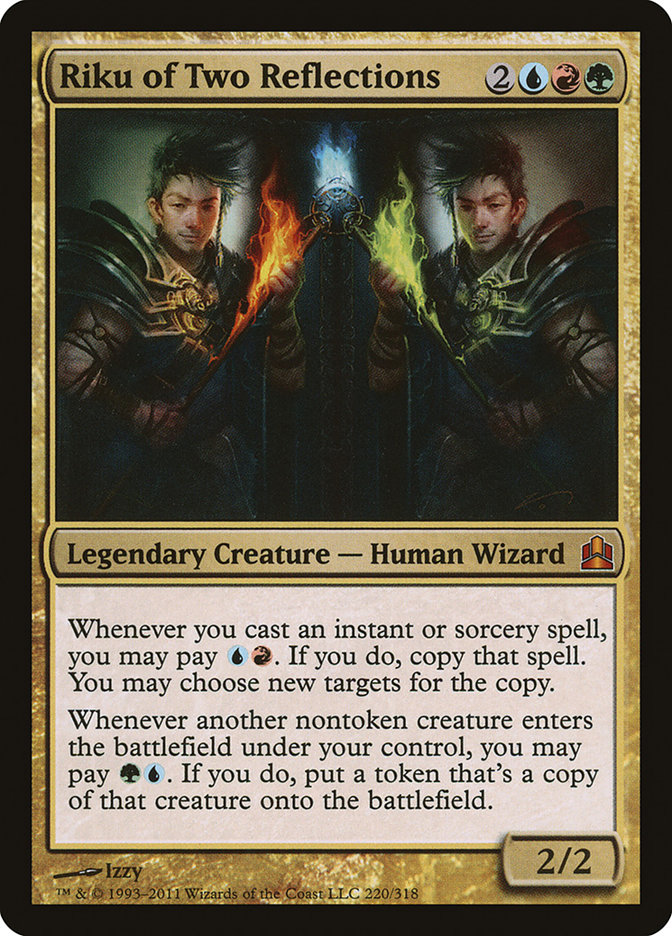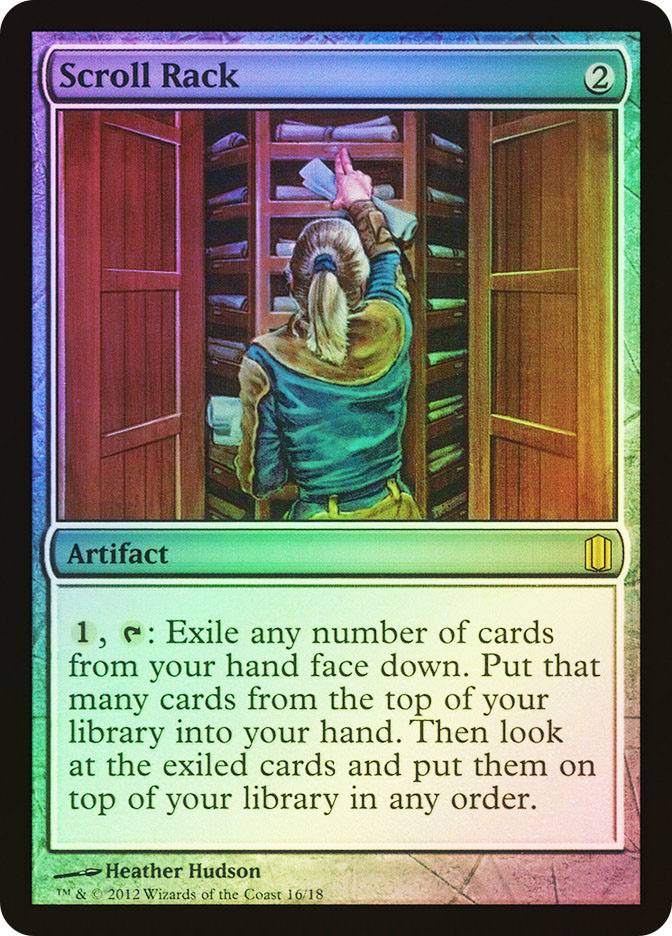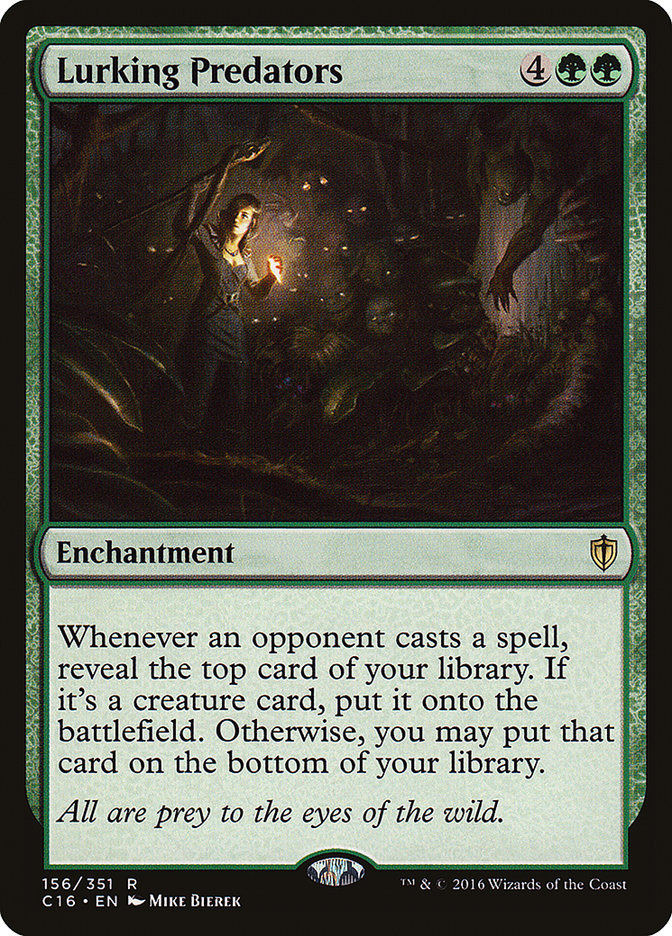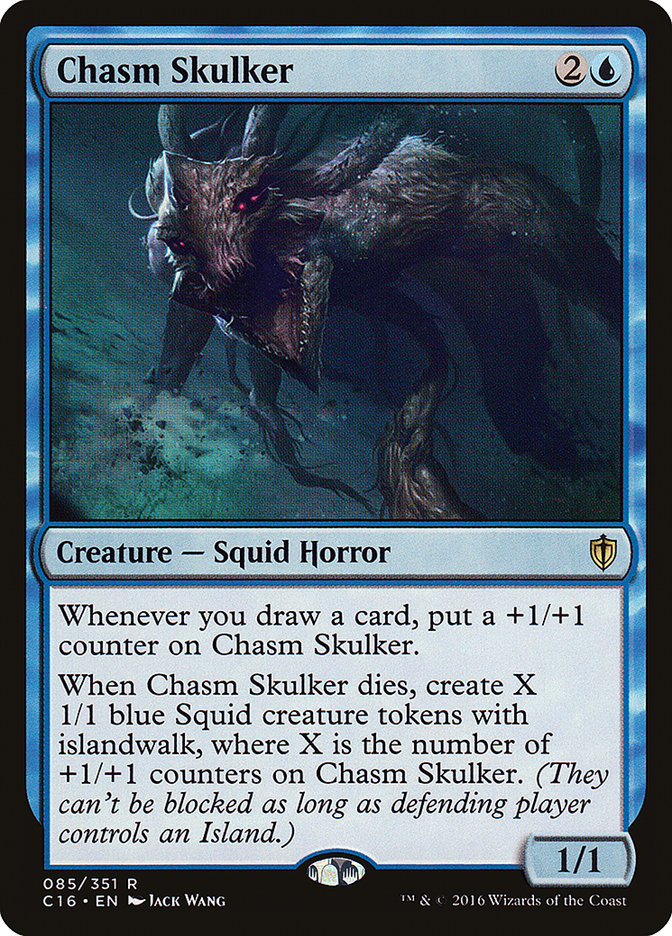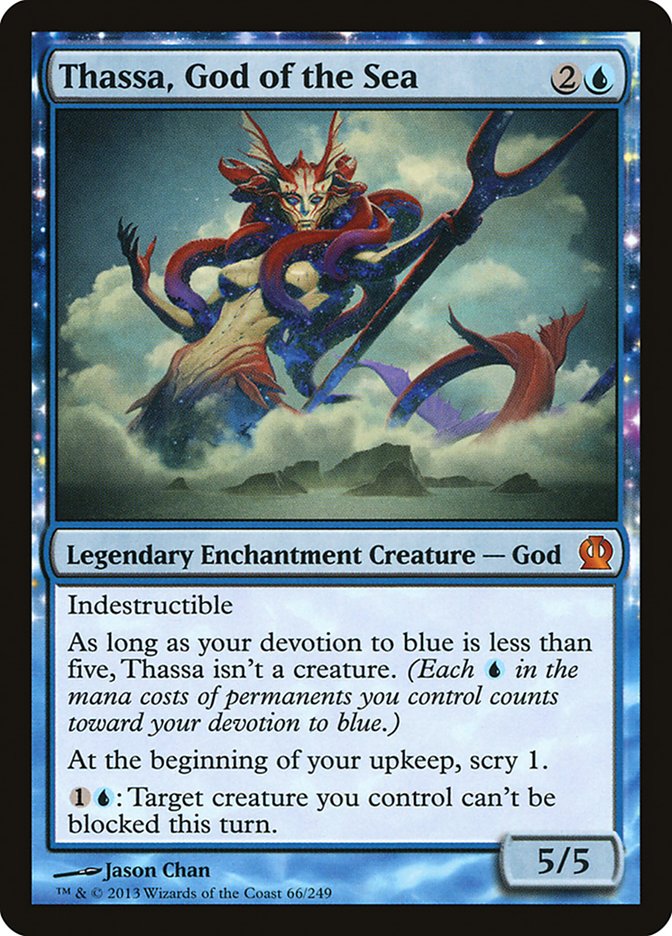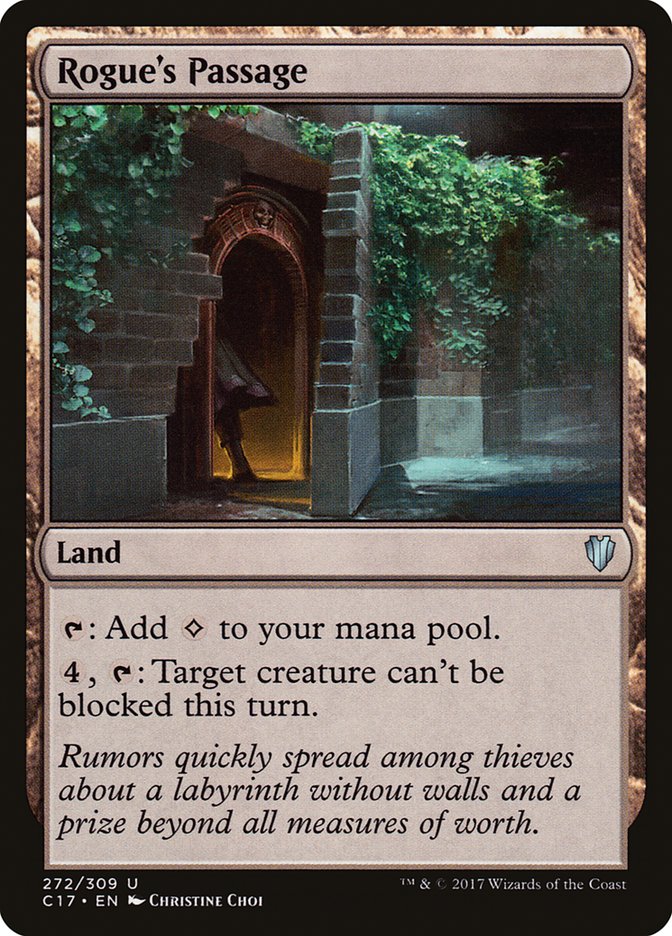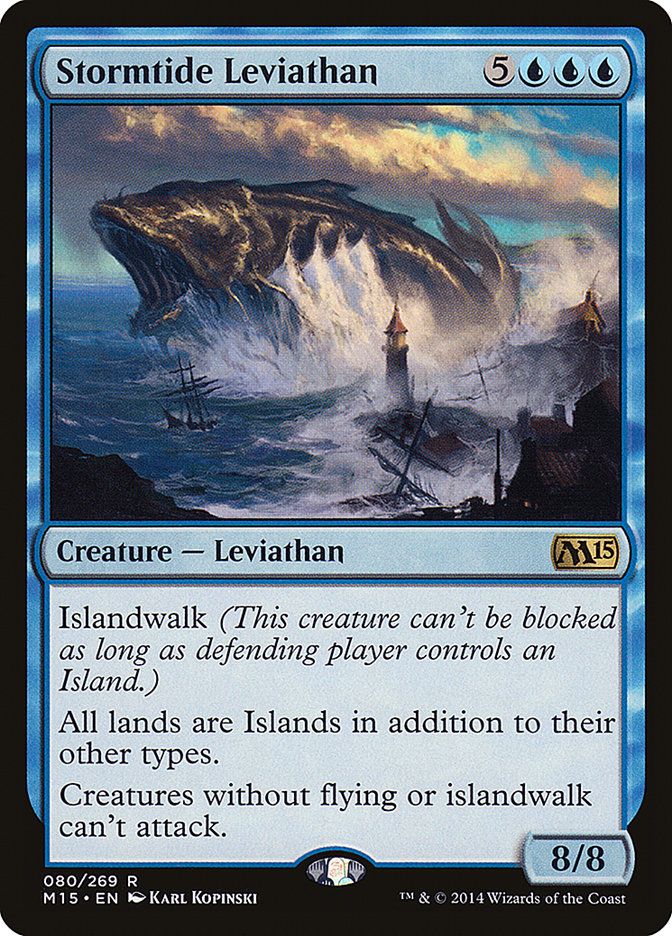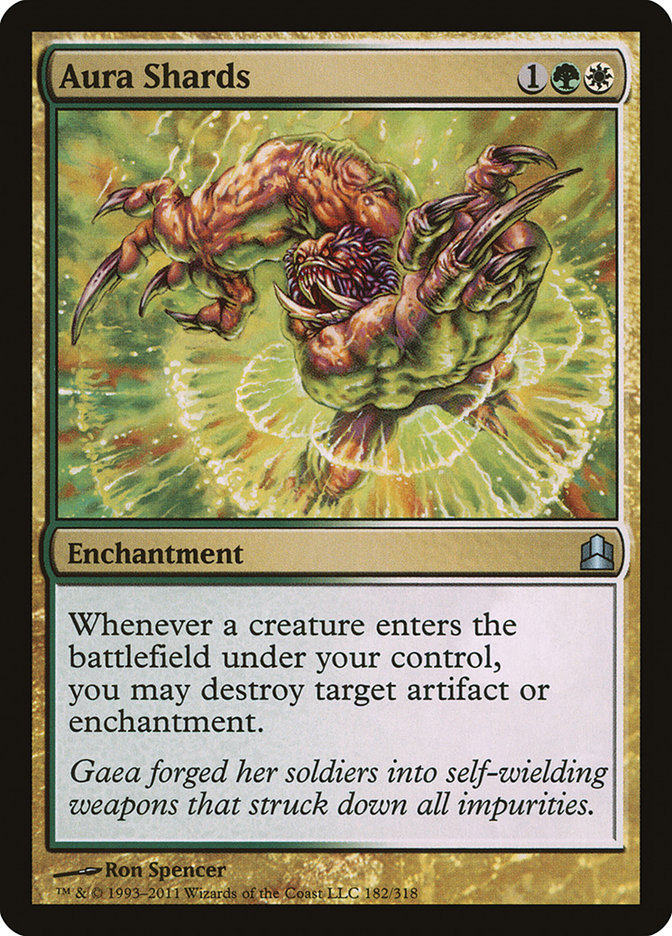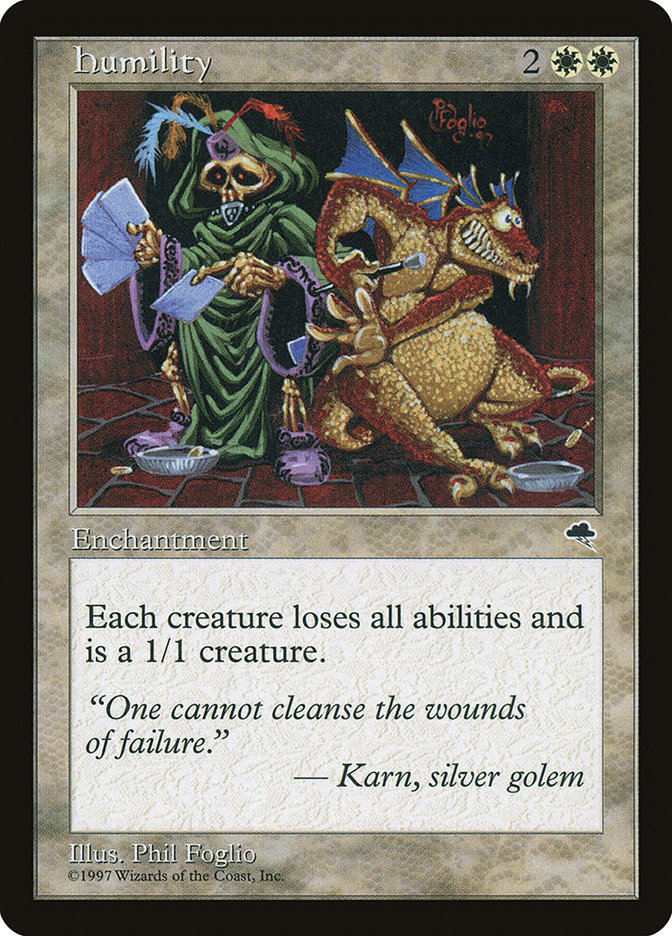The Do Over Project is coming up on four years in the making and I’m not even halfway finished. It’s time to ratchet up the production on making those decks featuring the “next 99.”. To get myself in the mood, I’m going to go with a deck that I’ve had for a long time: Dreaming of Intet. It was certainly one of the first ten I ever built. I was going to list all the cards which have come out of the deck over the years (the first iteration of the deck is from September 2010), but my configuration control document tells me that there are more than 100 (three of them, Primeval Titan, Prophet of Kruphix, and Sylvan Primordial, because they were banned). It’s my most active deck, meaning more cards have come and gone than any other, probably due to the fact that I’m always interested in the new hot brokenness, and if I have one deck that loves broken hotness, it’s this one.
Dreaming of Intet is one of my favorite decks to play. It’s probably my strongest and meanest deck as well. I’d hesitate to call it competitive, since it doesn’t win on Turn 4 or earlier, but it’s a deck I only pull out when I know we’ll be playing rough; if folks at the shop are running their fun, janky durdle-fests, Intet stays in the box. About half the time, I play it as Riku of Two Reflections. The deck certainly works differently depending on which commander is at the helm. With Intet, I play as much of the control game as possible; Riku leads me toward more aggression.
During construction of this deck, I considered trying to make it Modern-legal. Then I thought about the idea of “Modern-legal plus any card which has been released in a Commander set.” I’m a firm believer that restriction breeds creativity, but when I realized I was jumping through hoops to justify putting some cards in, I fell back to simply playing what’s normally legal in Commander. It turns out that Temple of the False God isn’t Modern-legal. It’s been in every Commander set, so it just feels like it’s part of the Modern era, but its only set printing is from Scourge.
I had two goals going in. First was to fulfill the promises of the Do Over Project in not reusing any cards. Originally, I had been okay with reusing lands which only produce mana, but there are enough good lands these days that I can get by with no repeats. Also, I promised to not engage in any shenanigans like dropping cards from the original just before building the new Do Over.
My second goal was to make the deck again playable as a Riku of Two Reflections deck. You might think that that’s not much of a goal, since Riku is pretty much just playable on its own. On the whole, I agree; this was more a caveat to myself to not include too many cards which Riku can’t take advantage of, like enchantments, planeswalkers, and artifacts.
One of my concerns is that Dreaming of Intet is chock-full of some of my favorite cards ever. The real test will be finding a different path. It wasn’t so much a goal as a side effect of not repeating cards that I didn’t want the Do Over version to stylistically repeat the original. The first has some top-of-the-library manipulation to go with Intet’s triggered ability.
The amount of library control has decreased a bit over time, but I had to get out of a Scroll Rack mindset, so to speak. It’s attractive to want to always have the perfect card on top when you resolve the ability, but devolving too much of the deck into library control is to me somewhat boring.
The next question I asked is “what do I want the deck to do?” It came to me rather quickly that I’d like Intet to be a kind of double threat—both for its triggered ability and its capacity to do commander damage. In the latter case, making its power greater—seven is nice, eight is better—to be able to kill in three hits instead of four. With eight, an unpowered hit coming first still gets us there (to 22, to be exact).
The line of play means making Intet more difficult to block as well as more difficult to kill. It’s a bit Voltron-ish, but we’re not looking to attach a bunch of things to her, just enough to get us over the hump. Of course, there is nothing wrong with a big buff or two as well. We’ll look at the list and then talk about the details.
Creatures (27)
- 1 Wood Elves
- 1 Godo, Bandit Warlord
- 1 Body Double
- 1 Chameleon Colossus
- 1 Farhaven Elf
- 1 Cold-Eyed Selkie
- 1 Thada Adel, Acquisitor
- 1 Stormtide Leviathan
- 1 Phyrexian Metamorph
- 1 Malignus
- 1 Maelstrom Wanderer
- 1 Diluvian Primordial
- 1 Colossal Whale
- 1 Nylea, God of the Hunt
- 1 Thassa, God of the Sea
- 1 Burnished Hart
- 1 Xenagos, God of Revels
- 1 Courser of Kruphix
- 1 Scourge of Fleets
- 1 Soul of New Phyrexia
- 1 Chasm Skulker
- 1 Reclamation Sage
- 1 Clever Impersonator
- 1 Greenwarden of Murasa
- 1 Selvala, Heart of the Wilds
- 1 Vizier of the Menagerie
- 1 Rhonas the Indomitable
Lands (16)
Spells (56)
- 10 Forest
- 1 Tooth and Nail
- 3 Mountain
- 8 Island
- 1 Rampant Growth
- 1 Kodama's Reach
- 1 Tangle
- 1 Sword of Light and Shadow
- 1 Sword of Fire and Ice
- 1 Bribery
- 1 Wayfarer's Bauble
- 1 Evacuation
- 1 Explosive Vegetation
- 1 Mercadia's Downfall
- 1 Greater Good
- 1 Spelljack
- 1 Keep Watch
- 1 Overwhelming Intellect
- 1 Harmonize
- 1 Garruk Wildspeaker
- 1 Mana Reflection
- 1 Explore
- 1 Recurring Insight
- 1 Overwhelming Stampede
- 1 Sword of Body and Mind
- 1 Asceticism
- 1 Sword of Feast and Famine
- 1 Darksteel Plate
- 1 Sword of War and Peace
- 1 Blasphemous Act
- 1 Ranger's Path
- 1 Aetherize
- 1 Mystic Confluence
- 1 Seasons Past
- 1 Selvala's Stampede
- 1 Baral's Expertise
- 1 Kefnet's Monument
- 1 Rhonas's Monument

You’ll Like This Deck If…
. . .you like casting spells. The creature count is moderate to low, especially for me. It’s low enough, in fact, that I didn’t add Lurking Predators. Lurking Predators isn’t in the original either, since it, too, has a high enough noncreature count to simply create too many whiffs. When the deck was all about library control, then Lurking Predators made sense. Here, less so.
You’ll like the deck also if you like cool little synergies, like between Chasm Skulker and Recurring Insight or Scourge of Fleets and Stormtide Leviathan. In fact, the latter combo is the only reason that Tooth and Nail is in the deck. Sure, the card is almost always great, even if you don’t tutor up an instant win condition, but I’m resolved to those two cards being the ones I get in every circumstance other than just losing if they’re what enters the battlefield.
You’ll love this deck if you like playing techy hidden gems, like Keep Watch and Mercadia’s Downfall. I keep singing the praises of Keep Watch, yet I still don’t see it played much. Mercadia’s Downfall is just a beating. I had up until recently thought that it was for only a single creature; turns out it’s for your whole team. And you know that people are playing lots of nonbasic lands. Of course, every time I mention the card, I have to recall one of my favorite moments in a Commander game. Anthony, whom you’ll remember as one of our Commander 2017 League, once one-shot killed me with commander damage from Riku by casting Mercadia’s Downfall and then copying it.
You Won’t Like This Deck If…
. . .you want a linear strategy. This is one of those decks with which you have to play around some with the pieces. It wants to go one of two ways, so you have to figure out from your opening hand which direction that might be.
You won’t like it if you want to play a heavy control strategy. The control elements are for the most part there to serve the purpose of getting creatures out of the way so that Intet can bash.
What Does It Do?
The deck stays active. The mana curve should be robust enough to start with action early on and ramp into bigger things. It draws cards in order to maximize the opportunity to use its strongest tools.
The main line of play is to get Intet onto the battlefield and start hitting people. She’ll need to be protected with things like Darksteel Plate and/or the Swords. Once equipped, she can fulfill the goal of being able to kill in fewer than four hits.
Cards like Thassa, God of the Sea, and Rogue’s Passage are there to make sure she gets through unabated. Those hits will also get additional spells to cast (it’s like drawing more cards!) for free. The card I most want to cast off Intet’s ability is Spelljack. It would be even better to be able to Spelljack someone else’s Spelljack, which had—well, you get the picture. Xenagos, God of Revels is intended to be a big buff to maybe get Intet to need only two hits, but if you want to use Xenagos’s ability, remember that Intet can’t have protection from red or protection from green. There are also a few cards like Nylea, God of the Hunt which give trample. Remember that Intent only needs to deal one damage for its ability to trigger; trample will run over enough speedbumps to get you where you want to go.
If Intet gets killed enough times that she’s difficult to cast again and Kefnet’s Monument and Rhonas’s Monument aren’t enough to bring down the cost, the other option is islandwalking. I’ve already mentioned the Stormtide Leviathan combo with Scourge of Fleets. It also pairs nicely with Cold-Eyed Selkie; Thada Adel, Acquisitor; and the tokens created by Chasm Skulker.
What Doesn’t It Do?
The deck doesn’t have any insta-win combos. There are a few fun and strong synergies, but there’s no real assemblage of cards which you can just plop down and end the game. If you’re in a tight spot, Evacuation will help you out, or maybe Blasphemous Act when you have protection from red on something large. In the end, the deck is mostly focused on doing its own thing as opposed to preventing others from doing stuff. That said, the few counterspells, to include the marvelous Mystic Confluence, will help some.
How Does It Lose?
Without much defense, the deck won’t do well with opposing creature swarms. The idea is to put people on the defensive enough so that they won’t want to commit to too many attacks. Tangle will get you out of one of those major attacks, but after that you might have to count on Stormtide Leviathan as a bulwark against ground attacks.
Without serious control elements, combo decks will certainly have a field day with you. One of the reasons that I built this deck the way it did (and to some extent build all of my decks) is that there aren’t any fast combo decks in my local environment. We also don’t play with lots of mass land destruction, so that’s not a concern, either. If your group is different, be aware.
Cards That Aren’t There
In this section, I normally list a few cards that I thought about putting into the deck but didn’t for various reasons. I’d like to take that a different direction for a minute. Spurred on by a conversation with regular reader Chris Shipper, I want to talk a bit about process.
It started as a chat about balancing between furthering one’s own plans versus upsetting those of others, but morphed into talking about the last few slots in a deck. Do you make them proactive or reactive? My thought here is that by the time you’re down to the last few—let’s call it four or five cards—you’ve put together the pieces in order to do the things you’re going to do. Those final few slots go into either making sure you can do it or making sure others have a tougher time stopping you.
If I’m in a position like this, I tend to look at my removal—especially asking if can I get rid of artifacts and enchantments which upset my plans. You’ll notice in Commander games that there are always more good targets than you have removal (unless you’re fortunate enough to resolve Aura Shards and keep it on the battlefield). The same is true if you’re running a heavy creature strategy. If Humility is going to ruin your day, then you need a spell to get rid of it instead of a creature.
For me, the problem is that I’m rarely in this situation. I’m almost always on the other side of the equation—needing to remove cards as opposed to adding them. Like you, I get excited about Magic cards. They do cool things. We start dreaming about game situations in which they’d be valuable, or other cards to combo them with. Before long, you have 120 cards in front of you and you need to pare down to 99. It’s frequently a devil’s choice, because there are way more fun cards than you have slots in the deck.
As I’m chopping stuff, I still look at what my wreck my day. I don’t want to cut that one piece which I’ll need in the dire situation. We see here that deck building isn’t just putting together some cards—it’s thinking holistically about the process. You’re not just building a deck; you’re building a deck that needs to play games.
Do Over…and Over…
The Intet Do Over gets us one step closer to finishing the project. Look for more in the near future—and if you have ideas on which directions would be cool to take some of the future versions, feel free to share.
Speaking of looking for things, you might want to pay attention to the official forums on Friday. I’ll be online if you need me.
This week’s Deck Without Comment is the current version of Dreaming of Intet.
Creatures (27)
- 1 Solemn Simulacrum
- 1 Seedborn Muse
- 1 Eternal Witness
- 1 Mystic Snake
- 1 Yavimaya Elder
- 1 Aura Thief
- 1 Coiling Oracle
- 1 Glen Elendra Archmage
- 1 Murkfiend Liege
- 1 Oracle of Mul Daya
- 1 Avenger of Zendikar
- 1 Kozilek, Butcher of Truth
- 1 Ulamog, the Infinite Gyre
- 1 Consecrated Sphinx
- 1 Phyrexian Metamorph
- 1 Snapcaster Mage
- 1 Hellrider
- 1 Dack's Duplicate
- 1 Mercurial Pretender
- 1 Dualcaster Mage
- 1 Flamerush Rider
- 1 Ulamog, the Ceaseless Hunger
- 1 Gigantoplasm
- 1 Sphinx of the Final Word
- 1 Stunt Double
- 1 Rashmi, Eternities Crafter
- 1 Champion of Rhonas
Planeswalkers (1)
Lands (19)
- 1 Gaea's Cradle
- 1 Wasteland
- 1 Volcanic Island
- 1 Tropical Island
- 1 Taiga
- 1 Temple of the False God
- 1 Maze of Ith
- 1 Steam Vents
- 1 Stomping Ground
- 1 Breeding Pool
- 1 Reliquary Tower
- 1 Rootbound Crag
- 1 Hinterland Harbor
- 1 Sulfur Falls
- 1 Kessig Wolf Run
- 1 Alchemist's Refuge
- 1 Temple of Mystery
- 1 Frontier Bivouac
- 1 Cinder Glade
Spells (51)
- 1 Sensei's Divining Top
- 1 Mana Drain
- 8 Forest
- 1 Scroll Rack
- 1 Sol Ring
- 1 Mountain
- 9 Island
- 1 Desertion
- 1 Fault Line
- 1 Reins of Power
- 1 Skyshroud Claim
- 1 Rhystic Study
- 1 Cryptic Command
- 1 Recross the Paths
- 1 Rite of Replication
- 1 Comet Storm
- 1 Cultivate
- 1 Praetor's Counsel
- 1 Beast Within
- 1 Chaos Warp
- 1 Command Tower
- 1 Spell Crumple
- 1 Bonfire of the Damned
- 1 Cyclonic Rift
- 1 Plasm Capture
- 1 Tempt with Discovery
- 1 Polymorphist's Jest
- 1 Aetherspouts
- 1 Pyromancer's Goggles
- 1 Zendikar Resurgent
- 1 Mind's Dilation
- 1 Planar Bridge
- 1 Insult
- 1 Swarm Intelligence
- 1 Hour of Promise
- 1 Primal Amulet

Check out our comprehensive Deck List Database for lists of all my decks:
SIGNATURE DECKS
Purple Hippos and Maro Sorcerers; Kresh Into the Red Zone; Halloween with Karador; Dreaming of Intet; You Did This to Yourself.
THE CHROMATIC PROJECT
Mono-Color
Heliod, God of Enchantments; Thassa, God of Merfolk; Erebos and the Halls Of The Dead; Forge of Purphoros; Nylea of the Woodland Realm; Karn Evil No. 9.
Guilds
Lavinia Blinks; Obzedat, Ghost Killer; Aurelia Goes to War; Trostani and Her Angels; Lazav, Shapeshifting Mastermind; Zegana and a Dice Bag; Rakdos Reimagined; Glissa, Glissa; Ruric Thar and His Beastly Fight Club; Gisa and Geralf Together Forever.
Shards and Wedges
Adun’s Toolbox; Angry, Angry Dinos; Animar’s Swarm; Ikra and Kydele; Karrthus, Who Rains Fire From The Sky; Demons of Kaalia; Merieke’s Esper Dragons; Nath of the Value Leaf; Rith’s Tokens; The Mill-Meoplasm; The Altar of Thraximundar; The Threat of Yasova; Zombies of Tresserhorn.
Four Color
Yidris: Money for Nothing, Cards for Free; Saskia Unyielding; Breya Reshaped.
Five-Color
Partners
Tana and Kydele; Kynaios and Tiro; Ikra and Kydele.
THE DO-OVER PROJECT
Animar Do-Over; Glissa Do-Over; Karador Do-Over; Karador Version 3; Karrthus Do-Over; Kresh Do-Over; Steam-Powered Merieke Do-Over; Lord of Tresserhorn Do-Over; Mimeoplasm Do-Over; Phelddagrif Do-Over; Rith Do-Over; Ruhan Do-Over.
If you’d like to follow the adventures of my Monday Night RPG group (in a campaign that’s been alive since 1987) which is just beginning the saga The Lost Cities of Nevinor, ask for an invitation to the Facebook group “Sheldon Menery’s Monday Night Gamers.”


